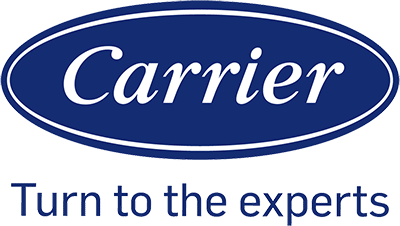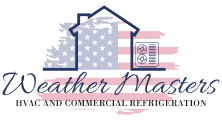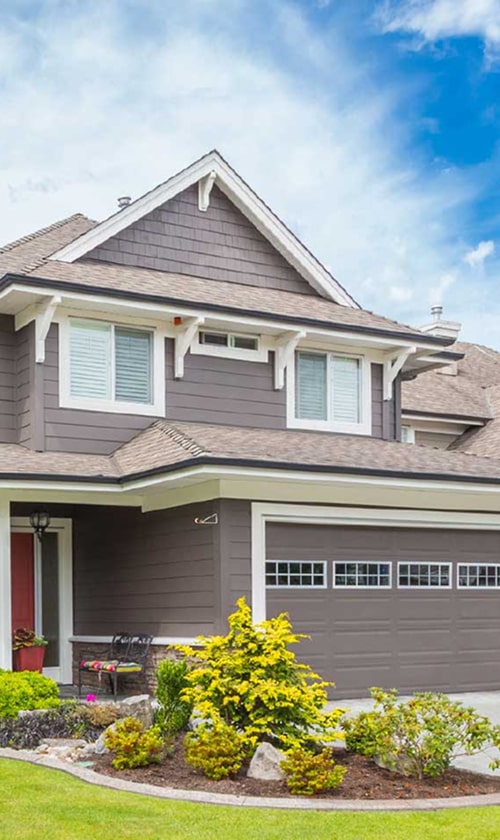Ensuring Proper Sizing and Load Calculation

When we install a heat pump system, making sure it is the right size is one of the most important steps. Careful load calculation helps us avoid common mistakes that can lead to higher energy use, extra costs, and less comfort.
Avoiding Incorrect Sizing
Incorrect sizing is one of the most common problems during heat pump installation. If we choose a unit that is too large, it may turn on and off too often, leading to energy loss and more wear and tear on the system.
A unit that is too small will run constantly as it tries to meet the heating or cooling demand. This will increase energy bills and stress the system. We need to follow the manufacturer’s guidelines and use the proper sizing charts for the specific model we are installing.
Using rules of thumb or guessing the size can cause major problems. We must always check the specs and make sure the unit matches the actual needs of the space.
Accurate Heat Load Calculation
Accurate heat load calculation is needed to choose the right heat pump system. This calculation includes factors like local climate, house size, window type, insulation, and how many people live there. Heat gain and heat loss are different for every home. We use tools like Manual J (a standard method in the HVAC industry) and software to get exact numbers.
Step-by-step, our process should look like this:
- Measure the area, including all rooms and levels.
- Check insulation and window efficiency.
- Account for how many people and appliances add extra heat.
- Use this data to find the size and capacity the heat pump needs.
With this approach, we ensure energy efficiency and avoid both over and undersized units.
Understanding Oversized and Undersized Units
An oversized unit heats or cools the home too quickly, which may sound good but actually wastes energy and does not remove humidity properly, leading to discomfort. Frequent cycling also reduces the heat pump’s lifespan. An undersized unit always struggles and can’t keep the temperature steady. This drives up electricity costs and cuts into energy savings.
Incorrect sizing, whether too large or too small, can reduce the efficiency of the heat pump. By understanding these risks, we can focus on choosing the correct system size to support comfort and energy savings throughout the year.
Common Installation Mistakes and How to Avoid Them

When we install a heat pump, missing small details can lead to big problems. Some issues come from not understanding the equipment, while others happen when we rush or skip steps.
Failing to Follow Manufacturer Guidelines
One of the most common heat pump installation mistakes happens when we overlook or ignore the manufacturer’s instructions. Every heat pump model comes with a specific set of guidelines. These directions cover everything from how to prepare the site to how to mount the unit and set up the controls.
If we fail to follow these rules, the heat pump might run less efficiently. It could also void the warranty, which means we would have to pay out of pocket for repairs. Key steps such as correct placement, drainage setup, and using recommended materials should never be skipped.
To avoid these mistakes, we should always read the manual before starting. If something is unclear, we need to contact the manufacturer or a qualified HVAC contractor for advice instead of guessing.
Inadequate Ductwork Inspection
Heat pumps rely on ductwork to move air throughout the house. If we do not inspect the existing ducts before installation, air leaks, blockages, or poor insulation can make the system less effective. Common mistakes include failing to check for damaged seals, loose connections, or dirt buildup.
Leaky ducts waste energy and can cause some rooms to be too hot or too cold. This mistake can also make the heat pump work harder, shortening its lifespan. Signs of poor ductwork include uneven airflow, high energy bills, and dust near registers.
We should always inspect, clean, and seal the ducts before we connect a new heat pump. Using a checklist can help us ensure every step is covered:
| Duct Checklist | Status |
|---|---|
| Inspect for leaks | Yes/No |
| Seal joints | Yes/No |
| Clean ducts | Yes/No |
| Check insulation | Yes/No |
Poor Refrigerant Charging Practices
Getting the refrigerant charge right is critical for proper heat pump operation. Incorrect refrigerant levels either too much or too little can lead to low heating or cooling capacity, higher energy use, and even compressor failure.
Common installation mistakes include using the wrong type of refrigerant, not checking for factory charge, or not using proper gauges. We must always follow manufacturer guidelines for the correct refrigerant type and charge. Skipping system pressure tests or failing to look for leaks can also create bigger problems later.
To avoid these issues, we should use calibrated tools and follow a step-by-step process. We should double-check the pressure and temperatures at startup. If we are unsure, it is best to call in a licensed HVAC technician.
Neglecting Electrical Connection Standards
Incorrect or unsafe electrical connections can damage the heat pump and create a fire hazard. Some common installation mistakes include using wires that are too small, skipping grounding, or ignoring local electrical codes. Failing to connect shutoff switches or circuit breakers puts both the system and the home at risk.
To prevent these issues, we must always use the proper wire gauge, secure all connections, and follow both code and manufacturer guidelines. It is important to verify the grounding and test all breakers and disconnects before turning the system on.
If we do not feel comfortable handling electrical work, hiring a certified electrician is the safest choice. This protects our investment and keeps everyone safe.
Optimal Placement and System Configuration

Placing heat pump systems correctly keeps them running efficiently. We need to consider airflow, sunlight, and distance from obstructions to avoid problems like overheating and reduced performance.
Selecting Ideal Outdoor Unit Locations
We should always choose a solid, level base for our outdoor units. Placing the unit on unstable ground can cause it to vibrate and make unwanted noise. If possible, it’s best to keep the outdoor unit away from areas where leaves, dust, or debris might gather.
It’s important to make sure there’s enough space around the unit. Most manufacturers recommend leaving at least two feet of open space on all sides. This lets air move freely in and out, which helps the heat pump operate better.
We should avoid placing the outdoor unit near bedrooms, windows, or busy walkways. The unit can be noisy during use, which may bother people nearby. It’s also wise to install the unit higher off the ground if snow or flooding is an issue in our area.
Protecting Systems From Direct Sunlight
When possible, we need to protect our heat pump’s outdoor unit from direct sunlight. Too much sun can overheat the system, causing it to work harder and possibly shut down. This can shorten the system’s life.
Positioning the unit on the north or east side of the house can help reduce sun exposure during the hottest parts of the day. If this isn’t possible, using a simple shade, like an awning or fence, may be helpful. However, we should keep any covers or shades at least three feet above the unit to ensure proper airflow.
We should avoid covering the unit tightly with solid objects, like patios or roofs. These can trap hot air and make overheating more likely. Always check the manufacturer’s recommendations before adding any shade.
Preventing Airflow Obstructions
Good airflow is crucial for our heat pump to function at its best. We need to keep the space around the outdoor unit free from plants, fences, or walls. Even small objects too close to the unit can block airflow, raising energy use and lowering efficiency.
Here are a few common things to avoid around the unit:
- Bushes or hedges
- Stacked garden tools
- Storage boxes or bins
- Fences within two feet of the unit
It is important to clean leaves, snow, and other debris off and around the unit often. By keeping the area clear, we help the heat pump avoid overheating and ensure it has the airflow it needs all year round.
Ensuring System Efficiency and Long-Term Performance
Keeping our heat pump system efficient can help save on energy costs and improve home comfort. We need to focus on stopping air leaks, keeping up with insulation, doing regular checks, and using our thermostats wisely.
Addressing Air Leaks and Drafts
Air leaks and drafts can lower the performance of our heat pump. They let warm or cool air escape, which causes the system to work harder. This leads to higher energy consumption and utility bills.
We should check for gaps around windows, doors, and vents. Sealing these spots with weatherstripping or caulk can make a big difference. Even small leaks around ducts can waste a lot of heated or cooled air before it reaches our rooms.
Use this checklist:
- Inspect window and door frames.
- Check for drafty spots in each room.
- Seal holes around pipes and cables.
- Test for leaks in ductwork.
By removing air leaks, we keep the heat or cool where it is needed most and avoid unnecessary system strain.
Maintaining Proper Insulation
Proper insulation keeps heated or cooled air inside, making our heat pump’s job easier. Poor insulation in walls, ceilings, or attics can lead to discomfort and high energy costs.
We should focus on insulating attics and crawl spaces, since most heat escapes from these areas. Insulate around ducts to stop energy loss. When insulation is thick enough and has the right R-value for our area, our heating and cooling system can run more efficiently.
Adding more insulation to old homes can be a simple way to increase comfort and reduce utility bills. Regularly checking insulation levels ensures we do not lose energy through unnoticed gaps.
Routine Maintenance Checks
Regular maintenance is key to system efficiency and long-term use. Dirt, dust, and blocked filters cause our system to work overtime, which leads to higher bills and lower comfort.
We should:
- Change or clean filters every 1-3 months.
- Check and clean outdoor units, clearing away leaves and debris.
- Schedule annual professional inspections for deeper system checks.
A maintenance log can help us remember when to do routine tasks. Consistent checks keep our heat pump running smoothly and may catch issues before they become costly repairs.
Optimizing Thermostat Settings
Setting our thermostat the right way helps control energy consumption and keeps us comfortable. A programmable or smart thermostat allows us to set schedules based on when we are home or away.
Some simple tips:
- During winter, keep the thermostat lower when we are asleep or out.
- In summer, set it higher when away.
- Avoid dramatic temperature changes, as this can cause our system to use more energy.
We should also place thermostats away from direct sunlight, vents, or windows to get the most accurate readings. Adjusting settings to fit our schedule helps maintain even heating and cooling while saving on overall energy costs.
Air Quality, Filtration, and Preventative Maintenance
Keeping our heat pump system running well means paying close attention to air filters, ductwork, and signs of trouble like strange noises. Good air quality and regular maintenance help us improve comfort and avoid costly repairs. Working with a certified HVAC technician, especially in areas with humid climates like Tampa, FL, helps uphold these standards.
Selecting and Maintaining High-Quality Filters
Using the right air filter is key for clean indoor air. High-quality filters remove dust, pollen, and other particles that can make allergies worse and lower air quality. We should check our filters every month, even if the label says they last longer.
Replace filters at least every 3 months, sooner if we have pets, allergies, or live in an area with lots of dust. A clogged filter forces the heat pump to work harder and can hurt its efficiency. Here’s a quick checklist:
- Check fit: Make sure the filter fits snugly.
- Check MERV rating: Choose a filter with a MERV rating between 8 and 13 for homes.
- Change regularly: Mark our calendar for filter changes.
Ductwork Inspection and Cleaning
Dust and dirt can build up in ductwork, spreading pollutants around our house. Every few years, or if we notice dust around vents, a routine inspection and cleaning help keep air fresh and the system efficient. Dirty ducts can lead to bad smells and make new filters dirty faster.
We should seal any leaks a technician finds during inspection, since leaks let unfiltered air get in. In Tampa, FL, humidity can make problems like mold worse if the ducts aren’t checked. Professional AC services should handle deep cleanings when needed.
Detecting Strange Noises and Short Cycling
Odd sounds, such as banging, rattling, or grinding from the heat pump, often mean there’s a problem. Some noises might point to loose parts, poor installation, or worn belts. Short cycling when the heat pump starts and stops too often can raise our energy bills and reduce system life.
Routine inspections help us find these issues early. If we hear new sounds or see the system turning on and off quickly, we should contact an HVAC technician right away. Fixing these problems fast keeps our air clean and means fewer breakdowns later.




